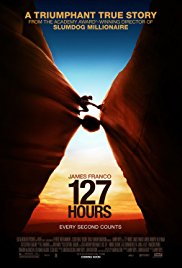Preparation
1. Review the film to make sure it is suitable for the class. Obtain appropriate administrative or parental approval.
2. Read the Student Handout and select chapter summaries and assignments suitable for the class. Modify or delete sections as appropriate. Students may not have had each of the experiences referred to in the prompts for the journal entries. One way to address this is to let them pick five or six to which they can respond. Print and copy the modified handout.
3. The lesson plan suggests that the teacher or a student who is a good reader or who is interested in drama read a quote from The Odyssey out loud to the class. If this task is assigned to a student, give the student advance warning and a copy of the passage so that he or she can practice.
Presentation of the Lesson
1. Ask if any student has seen the film and select one to introduce it to the class. When that student has finished, ask if anyone has something to add. If none of the students have seen the movie, then provide a short description of Ralston’s experience. An example is set out below:
This film is about a young man, an expert hiker, who went out alone to a remote area in the Utah desert. He didn’t tell anyone where he was going. As he walked down a slot canyon, which is a deep narrow rift in the earth with steep rock walls on either side, his path was blocked by a large boulder. When Ralston tried to climb over the boulder it shifted and pinned his arm against the wall of the canyon. Ralston couldn’t get out and he couldn’t get help. He spent five days trapped between the boulder and the canyon wall. For much of the time Ralston thought he would die. He had a movie camera with him and recorded his good-byes to family and friends. After five days, Ralston discovered a way to break the bones in his arm. In a last ditch effort to survive, he cut away his flesh until he had severed his arm from the rest of his body. Ralston then stumbled out of the canyon and fortunately encountered a family that was hiking on a nearby trail. When he saw the family, Ralston collapsed. Help was summoned and Ralston was air-lifted to a hospital.
2. Tell students that:
- In the front of his book, before he starts to describe himself and his experiences, Ralston quotes three verses from Homer’s The Odyssey; this is the passage in which the enchantress Circe describes the dangers that Odysseus and his crew will face after they leave her island;
- Through these verses Ralston describes the risk of adventure, preparing the reader for the idea that there are people who love adventure for the sake of adventure itself.
Then read, or have a student read, the passage out loud to the class.
3. Describe the journal assignment.
4. Distribute the student handout that you have reviewed and that you may have modified.
5. Have students read the handout and complete the assigned journal entries at the end of each chapter either as in-class work or as homework.
6. Show the film without interruption or chunked.
7. Use the discussion questions and/or some of the journal topics to stimulate class discussion.
8. Assign a summative essay at the end of the discussion.
9. Collect the journal entries and the essays.


